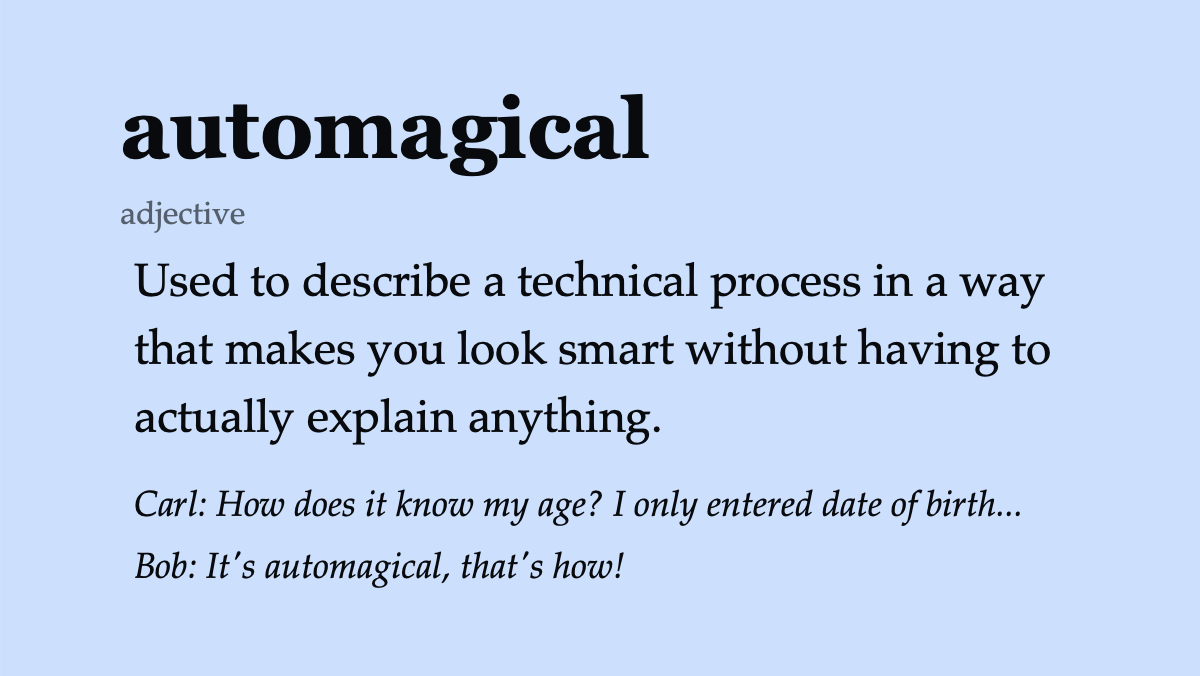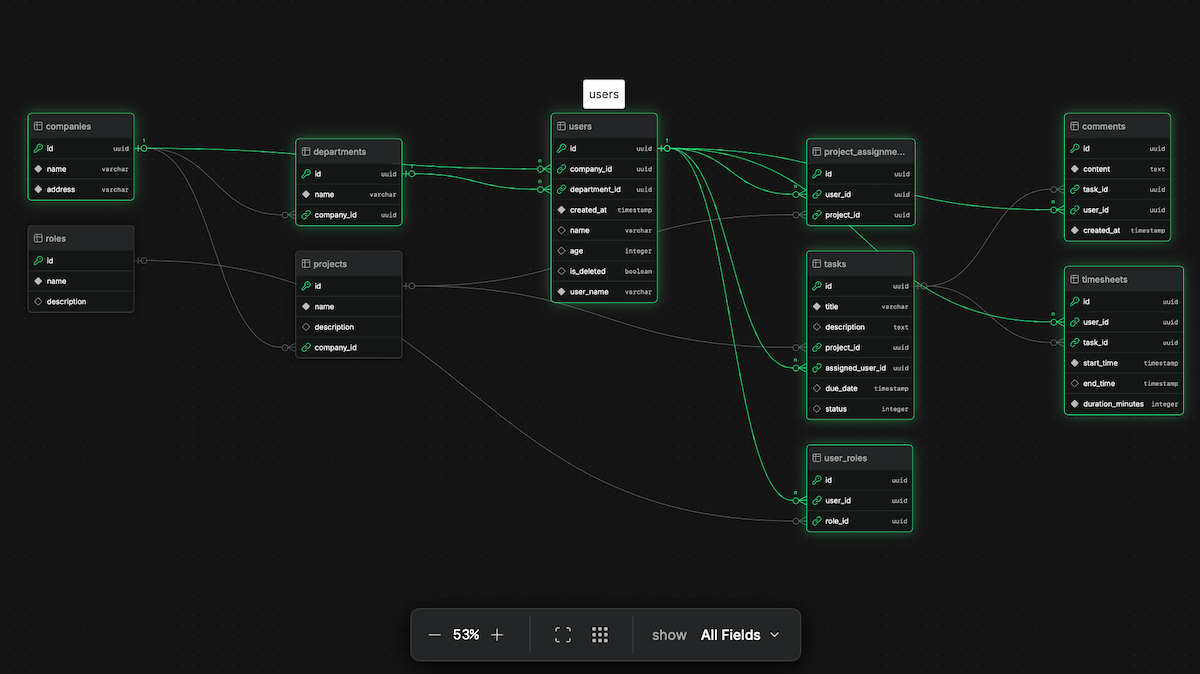Changelog News
Tariff-free developer news
Hello, there! 👋
Now that Severance season 2 is all wrapped up, I need something else to watch of similar caliber and intrigue. Otherwise, I’ll fall back into my New Girl and American Pickers re-runs habit. Hit me with your recommends!
Ok, let’s get into this week’s news.
🎧 The 1000x faster financial database
In July of 2020, Joran Dirk Greef stumbled into a fundamental limitation in the general-purpose database design for transaction processing. This sent him on a path that ended with TigerBeetle, a redesigned distributed database for financial transactions that yielded three orders of magnitude faster OLTP performance over the usual (general-purpose) suspects.
On this episode, Joran joins me to explain how TigerBeetle got so fast, to defend its resilience and durability claims as a new market entrant, and to stake his claim at the intersection of open source and business. Oh, plus the age old question: Why Zig? VIDEO
🔮 The AI 2027 scenario
The AI Futures Project is a new non-profit organization led by Daniel Kokotajlo, a former researcher in OpenAI’s governance division, with a goal of forecasting the future of AI. In their first publication, “AI 2027”, the group predicts that the impact of superhuman AI over the next decade will be enormous, exceeding that of the Industrial Revolution.
They lay this potential future out in a scenario that:
… represents our best guess about what that might look like. It’s informed by trend extrapolations, wargames, expert feedback, experience at OpenAI, and previous forecasting successes.
What’s cool about this work, unlike so many you can find online, is its incredible detail. The story goes quarter-by-quarter through the next 2.5 years, weaving one potential narrative of how things might proceed. There are two endings, though: a “slowdown” and a “race” ending. The overall goal is not prescriptive, but predictive accuracy. And they’re so serious about it, that they’re offering cash incentives for alternative scenarios that prove out to be more accurate.
🤩 Liam ERD
Liam ERD generates beautiful, interactive ER diagrams from your database. Whether you’re working on public or private repositories, Liam ERD helps you visualize complex schemas with ease.
You can get started using Liam with zero config. Just provide your schema and you’re good to go. It currently has direct supports of schemas from Postgres, Ruby on Rails, Prisma, and tbls. Other databases are in the works, and many have workarounds for the impatient.
📥 Mozilla “Thundermail” takes on Gmail
Mozilla is turning its Thunderbird open source email client into a full communications platform with the launch of Thundermail and Thunderbird Pro.
The expansion of Mozilla’s email services aims to compete with rival ecosystems like Gmail and Microsoft 365, which are more rich in features, except Mozilla’s offering stands out for its open source values of privacy, freedom, transparency and user respect.
Thunderbird has been losing users over the last five years, but they’re hoping the launch of Thunderbird Pro reverses that course. Pro consists of a few different sub-services:
Thunderbird Appointment, a new scheduling tool for sharing calendar links; Thunderbird Send, a rebuild of the discontinued Firefox Send; and Thunderbird Assist, a new AI-powered writing tool enabled via a partnership with Flower AI that is intended to do the processing locally to eliminate privacy concerns.
Once the full hosting service is ready, users will get to pick between “thundermail.com” and “tb.pro” domains, which both sound like duds to me. “Thundermail for Domains”, anybody?
💰 New Depot Registry makes builds even faster
Thanks to Depot for sponsoring Changelog News
Everyone knows you can increase the speed of your builds with a one-line code change thanks to Depot. But did you know you can also leverage their new registry to make your builds even faster>
Depot has revamped their ephemeral Docker registry and promoted it to a full product called Depot Registry. It’s engineered to serve images from the most optimal location, no matter where in the world the client is located.
Here’s a note from co-founder and CEO Kyle Galbraith:
Depot Registry is a new, faster, and more feature-rich registry that we’re excited to keep iterating on. It’s available to all users starting today.
The Depot registry automatically serves images from the nearest location worldwide, ensuring lightning-fast performance for every user. By leveraging Tigris for intelligent content routing and replication, Depot seamlessly replicates each layer to 13 global storage regions—acting as both a CDN and object storage provider with an S3-compatible interface.
If you’re new to Depot, you can get started with Depot Registry by signing up for a free 7-day trial, no credit card required.
👀 Grepping logs remains terrible
algernon first stated his public opinion that grepping logs is terrible a decade ago. The good news is he’s back, the bad news is his opinion hasn’t changed. After a quick comparison of running alike queries against 4.4 GB of JSON logs on his modern M2 SSD desktop and loading the same data into VictoriaLogs on an old Mac Mini, he finds:
What we saw here is that a computer with much more RAM, and computing power, and faster storage got absolutely obliterated by an overloaded Mac Mini that is ten years its senior. And not only in speed, but resource use too: I haven’t shown it, but working with raw text used a lot more CPU time, disk IO, and memory; meanwhile the Mac Mini barely blinked.
And not because it was all cached in memory! These are all cold queries. Cached queries are much, much faster. But how can it be that such an underpowered device runs circles around a powerful desktop?
Purpose-built software, dear reader. Purpose built software.
The moral of the story: databases are good!
Don’t grep your logs. Shove them in a log-ready database and query that. Not only will it require considerably less disk space, it will require less computing power, less RAM, and as a result, less time to perform the queries. And if that’s not enough, you can give the logs structure! You no longer need to remember the order of fields in a httpd’s Common Log Format, you can query against a named field instead. You can run aggregations, computations, build stats, correlate, join, and do all kinds of other database-y stuff. Not only does it perform better, you can do more, and do so more conveniently.
😰 The insanity of being a software engineer
Vitor M. de Sousa Pereira pens a solid rant on the never-ending list of technologies that software engineers must master and skills that we must acquire.
A recruiter reached out to me a couple of days ago about an engineering position for a secret company. They decided that they required senior level skills in Rails, Hotwire and, incredibly, native mobile development. Why not add kernel and compiler development in there as well for good measure?
When a house is being built, tons of people are involved: architects, civil engineers, plumbers, electricians, bricklayers, interior designers, roofers, surveyors, pavers, you name it. You don’t expect a single person, or even a whole single company, to be able to do all of those.
Vitor’s post focuses on web development, a sub-section of software engineering where this pain is particularly acute, but I’ve long said that if you don’t want to be continually learning new things to sustain your career trajectory, you don’t belong in the technology industry. Still, it can help to air our grievances once in awhile with a solid rant like this one.
🎙️ Turn him into a walrus
I turn Adam into Lego, a walrus, and a walrus in the style of Studio Ghibli…and so much more. This is a good one to watch on YouTube 👉 VIDEO
💁 Self-hosting like it’s 2025
Kira needed a topic for their first-ever blog post. Good thing they’re “almost addicted to trying out new software, building dashboards, and adding applications I didn’t really need.” This post summarizes and recommends some software “that I found particularly helpful, yet not as widespread as they could be.”
📈 A typeface for creating sparklines in text without code
Sparks uses OpenType’s contextual alternates feature (ligatures that are applied to individual characters based on the letters around them) to perform simple replacement operations on numbers. It works on both the desktop and the web where it works without JavaScript, though it does require a modern-ish web browser that can make use of OpenType features in text. Here’s a simple usage example
💰 What’s new in Retool: Q1 2025 release
Thanks to Retool for sponsoring Changelog News
Retool’s Q1 2025 stable release (v3.148) directly addresses the most frequent requests from builders deploying Retool across larger teams and supporting more complex workflows. Here’s what’s new:
- Build and deploy performant apps with multipage architecture – Multipage apps now default to better performance, faster loading, and isolated page code, with global or page scopes for streamlined layouts.
- Manage production-readiness with enterprise deployment controls – Enterprise deployment controls enable structured governance, collaboration, and testing for secure, reliable app releases.
- Multi-instance releases (private beta) – A simple manifest file designates consistent app version releases across multiple environments, enabling structured promotion from dev to production.
- Enhanced Usage Analytics – A redesigned Usage Analytics dashboard provides tab-based views and granular insights into user engagement across your entire deployment.
- Power your workflows with multistep functions, execution control, and AI – Retool Workflows gain advanced logic, time-based management, and broader AI integrations for more sophisticated automations.
Upgrade to 3.148, or if you’re new, create a free account to start building.
🧘 The blissful zen of a good side project
Josh Collinsworth:
Enjoying the freedom to explore possibilities, and happily follow any compelling whim—that’s the blissful zen of a good side project.
It’s having a carved-out space in your life where you, and only you, get to make the choices.
Nobody else. You might have to share everything outside this little room, but everything in here is yours and yours alone.
You don’t have to listen to any other voices here, except that quiet one inside of you that’s gently urging you to do the thing you know you need to do. You don’t owe it to anyone to choose anything—except yourself, and what you honestly feel.
📐 Don’t forget your (un)ordered list
- Git Koans (2013)
- AWS MCP Servers
- The human in the loop
- A case for procrastination
- Vector Sets are part of Redis
- GitHub’s official MCP Server
- Restructuring Announcement – Automattic
- AI Agents: less capability, more reliability, please
- rsync replaced with openrsync on macOS Sequoia
- The journey to open sourcing a $50 million neobank
- Four years of running a SaaS in a competitive market
- On the foolishness of “natural language programming”
- Bare | Fast, Lightweight Runtime for Modular JavaScript Apps
- ESP32-based focus timer with an epaper display and rotary dial
- A VS Code icon theme with adaptive colors to match editor’s theme
- mCaptcha: proof-of-work based, privacy respecting captcha system
📚 The Developer’s Dictionary
Pay no attention to the code behind the curtain 😶🌫️

That’s the news for now, but don’t forget you should also follow Changelog on YouTube, LinkedIn, Instagram, Mastodon, Bluesky, TikTok, and X.
Have a great week, forward this to a friend who might dig it & I’ll talk to you again real soon. 💚
–Jerod


